7 Questions to Ask Before You Buy a Couch
Home experts reveal what to look for—and what to avoid—when hunting for the perfect sofa.
By Joann Pan
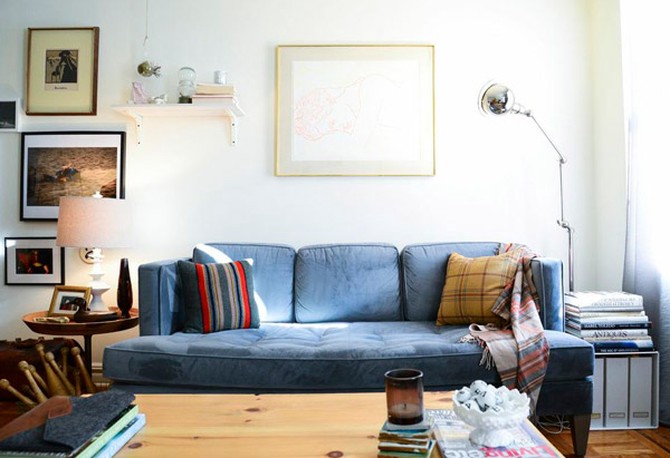
Photo: Courtesy of Homepolish
Should I Buy This One-of-a-Kind Downton Abbey Sofa?
Even if your flea-market discovery looks exactly like Lord and Lady Grantham's favorite seat—the crimson Knole-style sofa—in the Highclere Castle library, a vintage couch should have three things, says interior designer Evan Schwartz: (1) a sturdy frame without cracks; (2) its original hardwood parts—no low-quality replacements; and, (3) high-quality upholstery without rips or stains. Fair warning: Restoring midcentury furniture can be costly and time-consuming. Expect to pay upwards of $2,000 to professionally re-upholster and replace the original filling, Schwartz says. "You may need about 20 yards of fabric, which can cost about $75 a yard in the midrange."
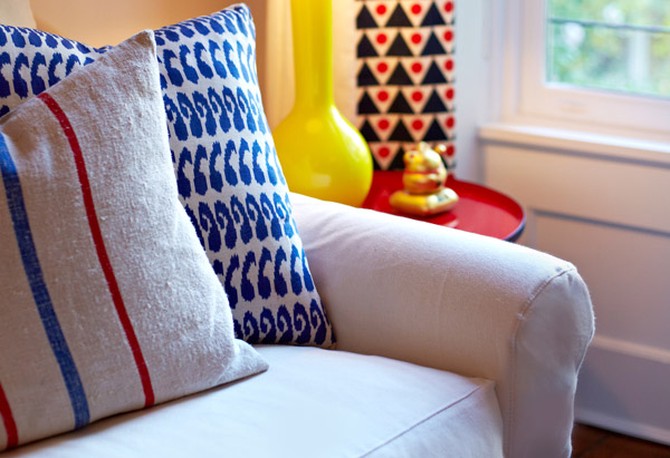
Photo: Jacob Snavely/Chango & Co.
How to Choose from Countless Styles?
To quickly eliminate options, try this simple tactic. Flip through magazines or home-goods catalogs, focusing only on the arms on couches and circling the ones you prefer, says Susana Simonpietri, the creative director of interior-design and architecture firm Chango & Co. "A straight arm will always read more contemporary, a rolled arm more classic, a higher arm more formal and a lower arm more casual," Simonpietri says. If you plan on spending hours lying down to read or nap, look at a Bridgewater or an English-style sofa, which both feature soft, low and rounded arms. "A taller back and arm are better suited for a formal living room," Simonpietri says, which you'll find on classic styles such as Tuxedos (rectangular build with arms at the same height as the back) and Chesterfields (with all-over tufting and highly rolled arms).
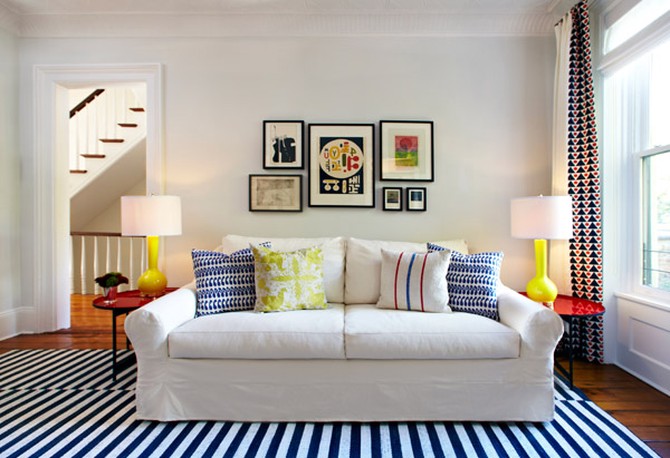
Photo: Jacob Snavely/Chango & Co.
I Love Tomato, but Just How Much Do I Love Tomato?
One of the biggest mistakes made is choosing a color—say, spicy paprika or peacock blue—after seeing only a square swatch, says Simonpietri. On move-in day, you'll most likely receive a couch that's brighter or darker or tomato-ier than you anticipated. What are the colors that always work? "Whites, off-whites, light taupes and grays," Simonpietri says, as well as any color you would find when taking a stroll down the beach. You can add bold and bright accents with patterned pillows, vibrant lampshades and rugs. If you're committed to finding a statement couch that will suit your living room, pick one you see on the showroom floor. Companies display their most popular colors, the ones that work for the majority of people, as floor samples, Simonpietri says.
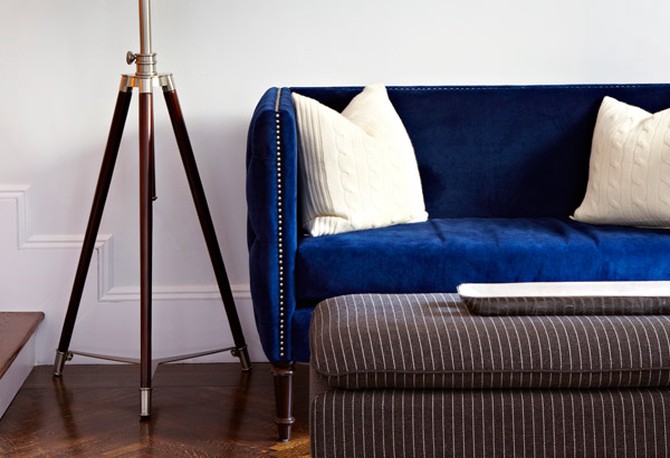
Photo: Jacob Snavely/Chango & Co.
If I Want a Fabric That Lasts, What Are My Options?
You're going to want to go with something heavy and tightly woven, says Hilary Robertson, antiques buyer and interior stylist for Elle Decoration, Vogue Living and Telegraph Magazine. Velvet is surprisingly durable. "But if you are really investing in a piece, mohair is the one to go for," Robertson says. Woven from goats' hair, it's crease-resistant, long-lasting and surprisingly versatile. It works with most shapes and sizes—from Chesterfields to streamlined sleeper sofas. For slipcovers you can easily throw in the wash, try army duck (thickly woven cotton fabric), velvet or heavy linen.

Photo: Chellise Michael/Homepolish
When Is the Right Time to Buy?
The best times to look for upholstered furniture on sale are during early spring (January and February) and early fall (July and August), says Patricia Bowling, vice president of communications at the American Home Furnishings Alliance. That's when stores clean out inventory to make room for new products. "Room and Board is known for great floor discounts during this time," interior designer Shelly Lynch-Sparks says. On holidays such as Memorial Day, Veterans Day and Labor Day, when stores discount furniture by 20 to 30 percent, the promotions generally begin on Friday at midnight, Lynch-Sparks says. "These pieces can be found right on the showroom floor. Or in the sale or 'as is' section."
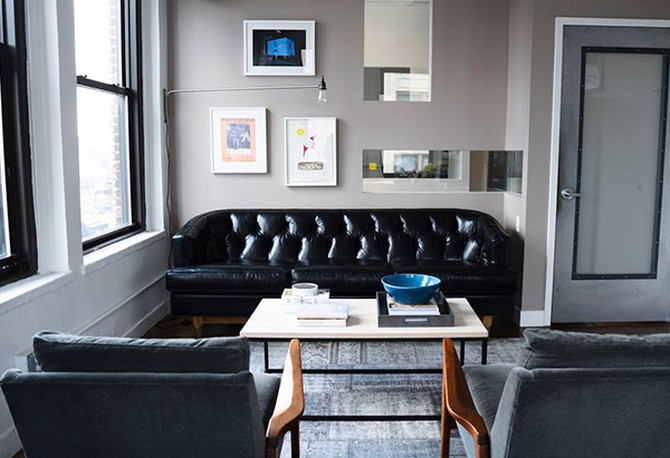
Photo: Courtesy of Homepolish
How Do I Choose the Right Size?
You've measured the heights and widths of every doorway, hallway and staircase in your building. Twice. The couch will definitely get in the house. Now, to determine the perfect dimensions, consider the size of your space. You'll know your couch is the right size if there's at least 1.5 feet—2 feet, if the table isn't regularly used—separating the couch and the coffee table, Schwartz says. Have a small living room? Try a 72- to 76-inch-long couch or a love seat that seats two people. A large and overstuffed sectional can provide plenty of space for family gatherings and book club meetings. If you plan on drinking coffee, reading the newspaper or catching up on work, you'll want a model where your feet remain on the ground and your back is firmly supported.
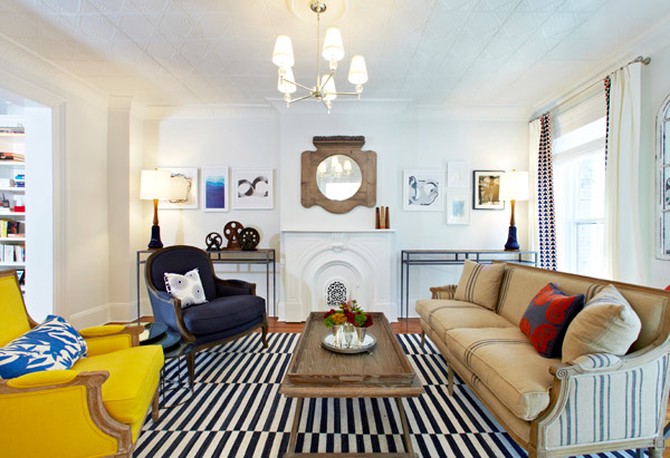
Photo: Ray Olivares/Chango & Co.
How Can I Test This Monster at the Showroom?
Before committing to any model, first unzip its cushions. You should see a neatly packed cushion with separate, zippered compartments for the foam and feathers, Simonpietri says. This way, you can easily replace the foam when the seat flattens with wear.
A top-of-the-line couch also consists of a frame made of kiln-dried hardwood (in which most of wood's moisture is removed) and eight-way, hand-tied screws or sinuous, steel springs and joints that are doweled and glued, says Bud Caywood, a furniture design consultant and International Society of Furniture Designers member. Avoid furniture constructed with softer plywood, particleboard and staples instead of screws. To check the quality of the frame, lift one front leg a couple inches off the floor. If the construction is strong, then the other sofa leg should easily raise off the ground at the same time. Another test of longevity: Firmly push down on the back of the sofa. If it bends, that's a sign that the top rail isn't supported, says Caywood.
Next: 3 ways to transform any room
Published 02/19/2014

